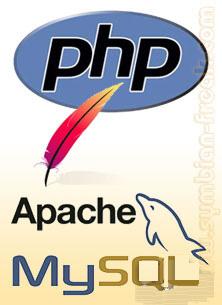7 recommended articles about connection and disconnection
In order to connect to the server, when calling mysql, you usually need to provide a MySQL username and most likely a password. If the server is running on a machine other than the login server, you also need to specify the hostname. Contact your administrator to find out the parameters used to connect (i.e., the host to connect to, the username, and the password used). After knowing the correct parameters, you can connect as follows: shell> mysql -h host -u user -p Enter password: ********host and user respectively represent the host name where the MySQL server is running and the MySQL account user name. . Replaced with the correct value when set. ******** represents your password; enter it when mysql displays the Enter password: prompt. If it works, you should see some introductory information after the mysql> prompt: shell> mysql
1. MySQL Getting Started Tutorial 1 - Connecting and Disconnecting the Server

Introduction: In order to connect to the server, when calling mysql, you usually need to provide a MySQL username and most likely a password. If the server is running on a machine other than the login server, you also need to specify the hostname. Contact the administrator to find...
2. mysql connection and disconnection server

Introduction: In order to connect to the server, when calling mysql, you usually need to provide a MySQL username and most likely a password. If the server is running on a machine other than the login server, you also need to specify the hostname. Contact your administrator to find out the parameters used to connect (that is, the host to connect to, the username, and the password used). Know
3. A summary of a thousand lines of MySQL learning notes
Introduction: This article summarizes in detail the learning process of MySQL Various techniques are shared with everyone for your reference. The details are as follows: /* Start MySQL */net start mysql/* Connect and disconnect from the server */mysql -h address-P port-u username-p password/* Skip permission verification to log in to MySQL */mysqld --skip- grant-tables--Modify root password password encryption
4. MySQL Chinese Reference Manual--Connecting and Disconnecting Servers_MySQL
Introduction: This chapter provides an introductory tutorial to MySQL by demonstrating how to use the mysql client program to create and use a simple database. mysql (sometimes called the "terminal monitor" or just "monitor") is an interactive program that allows you to connect to a MySQL server, run queries, and view the results. mysql can be used in batch mode: you put the query in a file in advance, and then
5. MySQL Chinese Reference Manual--Connecting and Disconnecting Servers_MySQL
Introduction: MySQL Chinese Reference Manual--Connecting and Disconnecting Servers
6. One of the most commonly used MySQL Qianxing_MySQL
Introduction: * Start MySQL * net start mysql * Connect and disconnect from the server * mysql -h address -P port -u username -p password * Skip permission verification to log in to MySQL * mysqld --skip-grant-tables-- Modify root password password encryption function
7. mysql Use the command line to connect and disconnect from the server
Introduction: This article introduces how to connect and disconnect from the database using the command line. In order to connect to the server, when calling mysql, you usually need to provide a MySQL username and most likely a password.
The above is the detailed content of 7 recommended articles about connection and disconnection. For more information, please follow other related articles on the PHP Chinese website!

Hot AI Tools

Undresser.AI Undress
AI-powered app for creating realistic nude photos

AI Clothes Remover
Online AI tool for removing clothes from photos.

Undress AI Tool
Undress images for free

Clothoff.io
AI clothes remover

Video Face Swap
Swap faces in any video effortlessly with our completely free AI face swap tool!

Hot Article

Hot Tools

Notepad++7.3.1
Easy-to-use and free code editor

SublimeText3 Chinese version
Chinese version, very easy to use

Zend Studio 13.0.1
Powerful PHP integrated development environment

Dreamweaver CS6
Visual web development tools

SublimeText3 Mac version
God-level code editing software (SublimeText3)

Hot Topics
 When might a full table scan be faster than using an index in MySQL?
Apr 09, 2025 am 12:05 AM
When might a full table scan be faster than using an index in MySQL?
Apr 09, 2025 am 12:05 AM
Full table scanning may be faster in MySQL than using indexes. Specific cases include: 1) the data volume is small; 2) when the query returns a large amount of data; 3) when the index column is not highly selective; 4) when the complex query. By analyzing query plans, optimizing indexes, avoiding over-index and regularly maintaining tables, you can make the best choices in practical applications.
 Can I install mysql on Windows 7
Apr 08, 2025 pm 03:21 PM
Can I install mysql on Windows 7
Apr 08, 2025 pm 03:21 PM
Yes, MySQL can be installed on Windows 7, and although Microsoft has stopped supporting Windows 7, MySQL is still compatible with it. However, the following points should be noted during the installation process: Download the MySQL installer for Windows. Select the appropriate version of MySQL (community or enterprise). Select the appropriate installation directory and character set during the installation process. Set the root user password and keep it properly. Connect to the database for testing. Note the compatibility and security issues on Windows 7, and it is recommended to upgrade to a supported operating system.
 Explain InnoDB Full-Text Search capabilities.
Apr 02, 2025 pm 06:09 PM
Explain InnoDB Full-Text Search capabilities.
Apr 02, 2025 pm 06:09 PM
InnoDB's full-text search capabilities are very powerful, which can significantly improve database query efficiency and ability to process large amounts of text data. 1) InnoDB implements full-text search through inverted indexing, supporting basic and advanced search queries. 2) Use MATCH and AGAINST keywords to search, support Boolean mode and phrase search. 3) Optimization methods include using word segmentation technology, periodic rebuilding of indexes and adjusting cache size to improve performance and accuracy.
 Difference between clustered index and non-clustered index (secondary index) in InnoDB.
Apr 02, 2025 pm 06:25 PM
Difference between clustered index and non-clustered index (secondary index) in InnoDB.
Apr 02, 2025 pm 06:25 PM
The difference between clustered index and non-clustered index is: 1. Clustered index stores data rows in the index structure, which is suitable for querying by primary key and range. 2. The non-clustered index stores index key values and pointers to data rows, and is suitable for non-primary key column queries.
 MySQL: Simple Concepts for Easy Learning
Apr 10, 2025 am 09:29 AM
MySQL: Simple Concepts for Easy Learning
Apr 10, 2025 am 09:29 AM
MySQL is an open source relational database management system. 1) Create database and tables: Use the CREATEDATABASE and CREATETABLE commands. 2) Basic operations: INSERT, UPDATE, DELETE and SELECT. 3) Advanced operations: JOIN, subquery and transaction processing. 4) Debugging skills: Check syntax, data type and permissions. 5) Optimization suggestions: Use indexes, avoid SELECT* and use transactions.
 The relationship between mysql user and database
Apr 08, 2025 pm 07:15 PM
The relationship between mysql user and database
Apr 08, 2025 pm 07:15 PM
In MySQL database, the relationship between the user and the database is defined by permissions and tables. The user has a username and password to access the database. Permissions are granted through the GRANT command, while the table is created by the CREATE TABLE command. To establish a relationship between a user and a database, you need to create a database, create a user, and then grant permissions.
 Can mysql and mariadb coexist
Apr 08, 2025 pm 02:27 PM
Can mysql and mariadb coexist
Apr 08, 2025 pm 02:27 PM
MySQL and MariaDB can coexist, but need to be configured with caution. The key is to allocate different port numbers and data directories to each database, and adjust parameters such as memory allocation and cache size. Connection pooling, application configuration, and version differences also need to be considered and need to be carefully tested and planned to avoid pitfalls. Running two databases simultaneously can cause performance problems in situations where resources are limited.
 Explain different types of MySQL indexes (B-Tree, Hash, Full-text, Spatial).
Apr 02, 2025 pm 07:05 PM
Explain different types of MySQL indexes (B-Tree, Hash, Full-text, Spatial).
Apr 02, 2025 pm 07:05 PM
MySQL supports four index types: B-Tree, Hash, Full-text, and Spatial. 1.B-Tree index is suitable for equal value search, range query and sorting. 2. Hash index is suitable for equal value searches, but does not support range query and sorting. 3. Full-text index is used for full-text search and is suitable for processing large amounts of text data. 4. Spatial index is used for geospatial data query and is suitable for GIS applications.






